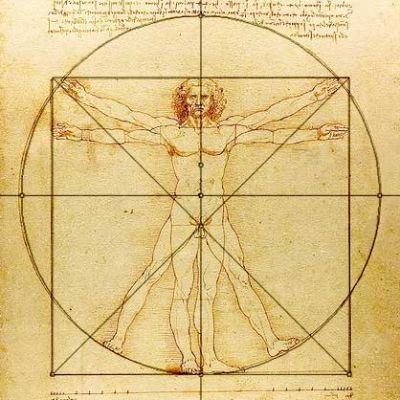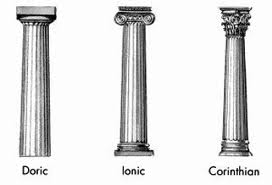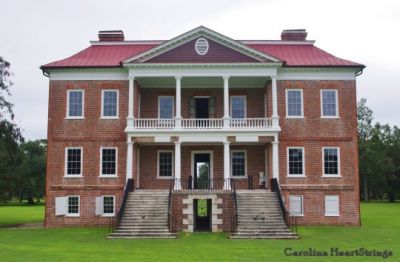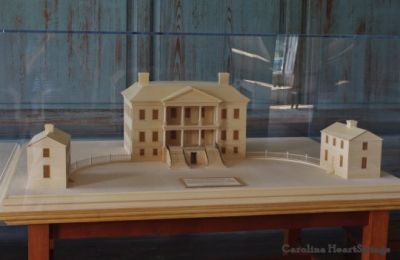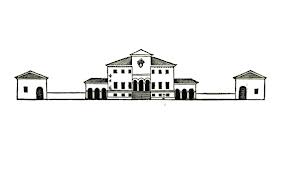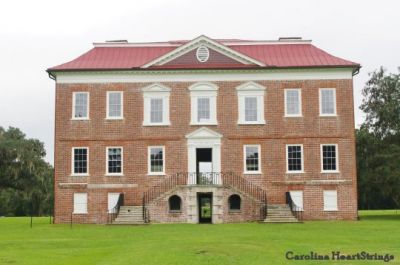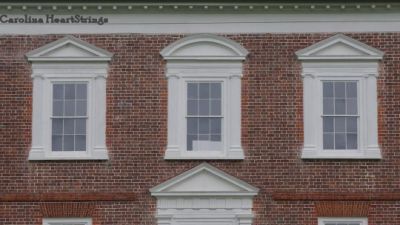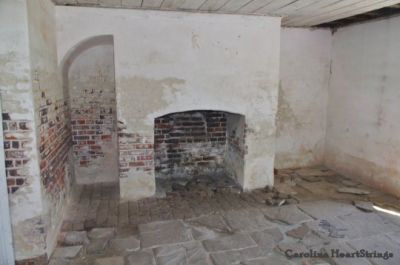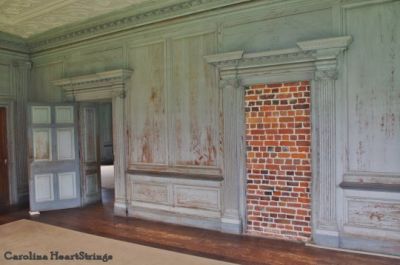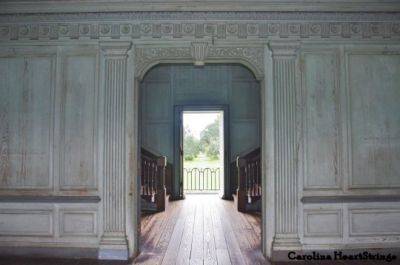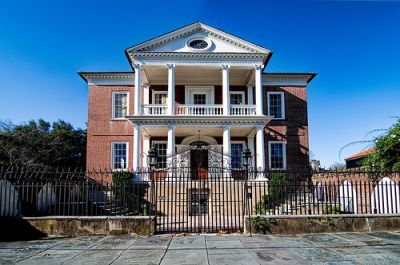When I first spoke to Cooking with Nonna about writing for their blog I was excited because I knew that it would lead to me looking at my Carolina surroundings with a different eye. I have been contributing our Carolina HeartStrings recipes for quite a while now but there is so much going on here beyond cooking and with a love for architecture and an interest in learning more about my Italian heritage I knew that an exciting opportunity lay ahead.
One of those opportunities presented itself when I came across an article in Charleston’s Post and Courier about Charleston’s influence on later Palladian architecture in America. I knew that Andrea Palladio (1508-1580) was a great Italian architect that had influenced such important British architects as Inigo Jones and Sir Christopher Wren. Their work naturally came across the waters to the New World and was appreciated by those who were accumulating wealth.
For those who are unfamiliar with Andrea Palladio let me briefly tell you that he was born in Padova which was in the Republic of Venice. It is in this same area that his work can still be viewed as many great buildings including churches and villas still exist. He was born with the name Andrea Di Pietro Della Gondola but was renamed by his employer, Gian Giorgio Trissino, as Andrea Palladio. Palladio translates to “wise one” and indeed, Andrea was this and more. His employer had been greatly influenced by the ancient Roman architect Vitruvius and passed his passion for the style on to Palladio. One example of the symmetry and mathematical emphasis of Vitruvian style is evident in Leonardo DiVinci’s 1487 drawing, “Vitruvian Man”.
Trissino also afforded Palladio the opportunity to work in Rome where he studied the ancient style that incorporates proportion, balance and mathematics. Decorative features include temple elements such as columns and various column capitals. Even the column capitals have an order and can indicate the importance of a room or building level. The basest capital is Doric, followed by Ionic and then Corinthian.
Palladio designed many grand country villas for wealthy city merchants to retreat to. Many still exist and can be seen throughout the beautiful Italian countryside. Because these were country homes they often incorporated outbuildings that serviced the agricultural needs of the estates and these, too, fit into a balanced grand design.
Although Palladio’s buildings are in the old Republic of Venice his influence was far reaching. He has been called the most influential architect ever on Western Architecture. This was due to his four volume “I Quattro Libri dell’Architettura” (“The Four Books of Architecture”) which was first published in 1570 in Venice. Translations soon followed and “gentlemen architects” included the four volume set in their libraries. “I Quattro” was even referred to by Thomas Jefferson as “his bible”.
Did you know that one of the greatest American examples of Palladian architecture is here, just outside of Charleston, South Carolina? Palladio’s visions worked well for a wealthy, South Carolina planter, John Drayton.
Drayton Hall, on the Ashely River, upriver from Charleston, was built between 1738 and 1742. This was a home built as a retreat and a place of grandeur for Drayton to enjoy with his family. And his family certainly did enjoy it because, remarkably, it stayed in his family for 7 generations until 1974. Equally remarkable, the home had never been updated with electricity or other “comforts” so it remains an interesting time capsule. Left unfurnished the amazing architectural features, both interior and exterior, are easily appreciated.
Note the central hallways, porticos and prominent stairs leading to an elevated reception level. These are Palladian hallmarks. Central hallways lend themselves well to warm climates and were appreciated in Italy as well as here in the Carolinas.
At one time Drayton Hall had two outbuildings; flankers attached by colonnades.
Compare to this drawing of Palladio’s Villa Godi, a villa in Veneto! This was one of Palladio’s first projects.
This may be considered the rear of Drayton Hall. The reason I say may be considered is that although you approach the “front” from a grand drive, the “rear” is facing the river. At a time when many people arrived by boat this “entrance” needed to also be very attractive and features the three most ornate windows as seen from the outside.
These 3 windows incorporate a design feature called “aediculae” and may be the earliest known example in the United States. Note the pilaster surrounds and pediment toppings of the windows in an alternating pattern.
Under this great home constructed of 300,000 bricks (used for the interior walls as well) is the service floor which includes the original kitchen. This is unusual in the South where due to fires and heat cooking was often done in an outbuilding. However, it is common to Palladian design and is found here at Drayton Hall.
Inside balance and harmony reign as well. Did someone brick up this doorway? No. The need for balance required the framing and positioning of a door to balance the door used to enter this room. However, it was bolted closed and at some point removed. The house which has survived occupation during both the Revolutionary and Civil Wars has lost a few (surprisingly few) features over time.
This detailed woodwork is actually on the entry level and less significant floor. Thus the capitals at the top of this door way are Doric. The room with the fake door is also on this floor but since that room holds more significance note the Ionic columns in that photo. Drayton Hall, like many of Palladio’s projects, had its more important rooms on the uppermost floor.
Throughout the property, inside and out, are the details and strict adherence to Palladian principals that have resulted in Drayton Hall’s importance being recognized not only locally but at a national level. There are some other examples of Palladian architecture in Charleston such as The Miles Brewton House (c. 1769) at 27 King Street.
It was Drayton Hall, however, that participated in hosting Vitruviana 2012, a symposium that included presentations by The Center For Palladian Studies in America, Inc. The next symposium is being planned for April 12 and 13, 2013 is also to be held in Charleston. Interested academics can submit papers at this time.
Schedule permitting it is a symposium that I would love to attend. Viewing Palladio’s work in beautiful Venice and the surrounding countryside would be an even more desirable way to study in a location that is clearly the birthplace of so many beautiful and important buildings around the world and also so very close to home! If you’re lucky enough to be able to visit Italy, how wonderful for you. If not, take a trip to the beautiful, friendly Carolinas and make Drayton Hall a “must see” on your trip!

